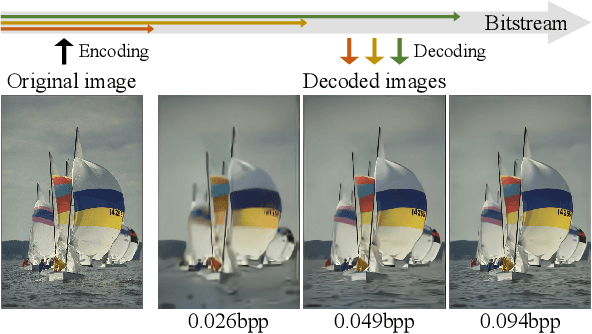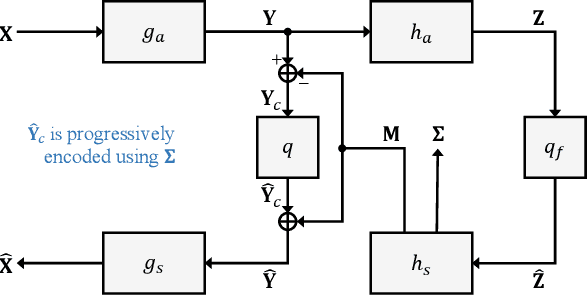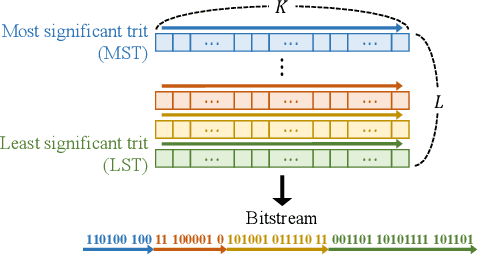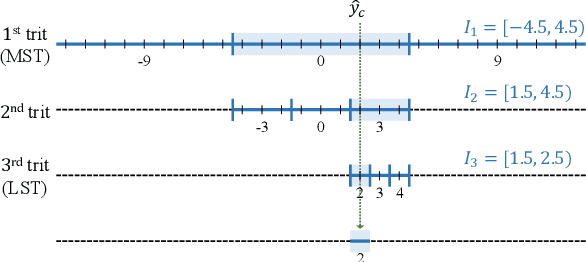Kwang Pyo Choi
Context-Based Trit-Plane Coding for Progressive Image Compression
Mar 13, 2023Abstract:Trit-plane coding enables deep progressive image compression, but it cannot use autoregressive context models. In this paper, we propose the context-based trit-plane coding (CTC) algorithm to achieve progressive compression more compactly. First, we develop the context-based rate reduction module to estimate trit probabilities of latent elements accurately and thus encode the trit-planes compactly. Second, we develop the context-based distortion reduction module to refine partial latent tensors from the trit-planes and improve the reconstructed image quality. Third, we propose a retraining scheme for the decoder to attain better rate-distortion tradeoffs. Extensive experiments show that CTC outperforms the baseline trit-plane codec significantly in BD-rate on the Kodak lossless dataset, while increasing the time complexity only marginally. Our codes are available at https://github.com/seungminjeon-github/CTC.
Learning Local Implicit Fourier Representation for Image Warping
Jul 05, 2022



Abstract:Image warping aims to reshape images defined on rectangular grids into arbitrary shapes. Recently, implicit neural functions have shown remarkable performances in representing images in a continuous manner. However, a standalone multi-layer perceptron suffers from learning high-frequency Fourier coefficients. In this paper, we propose a local texture estimator for image warping (LTEW) followed by an implicit neural representation to deform images into continuous shapes. Local textures estimated from a deep super-resolution (SR) backbone are multiplied by locally-varying Jacobian matrices of a coordinate transformation to predict Fourier responses of a warped image. Our LTEW-based neural function outperforms existing warping methods for asymmetric-scale SR and homography transform. Furthermore, our algorithm well generalizes arbitrary coordinate transformations, such as homography transform with a large magnification factor and equirectangular projection (ERP) perspective transform, which are not provided in training.
DPICT: Deep Progressive Image Compression Using Trit-Planes
Dec 12, 2021



Abstract:We propose the deep progressive image compression using trit-planes (DPICT) algorithm, which is the first learning-based codec supporting fine granular scalability (FGS). First, we transform an image into a latent tensor using an analysis network. Then, we represent the latent tensor in ternary digits (trits) and encode it into a compressed bitstream trit-plane by trit-plane in the decreasing order of significance. Moreover, within each trit-plane, we sort the trits according to their rate-distortion priorities and transmit more important information first. Since the compression network is less optimized for the cases of using fewer trit-planes, we develop a postprocessing network for refining reconstructed images at low rates. Experimental results show that DPICT outperforms conventional progressive codecs significantly, while enabling FGS transmission.
 Add to Chrome
Add to Chrome Add to Firefox
Add to Firefox Add to Edge
Add to Edge